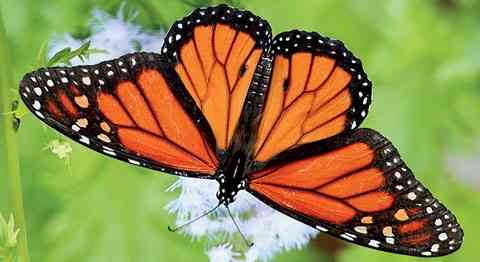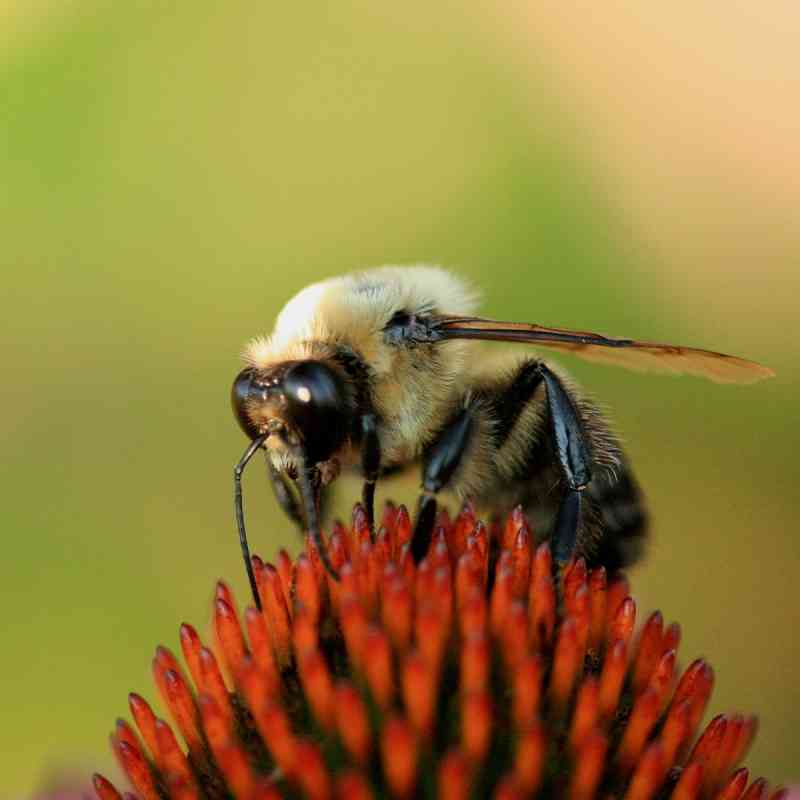Riding With the Wind

Gliding with orange and black outstretched wings, the monarch butterfly is a lucky omen that signals summer is on its way. Weighing less than a dime, monarchs soar on wind currents for thousands of miles during migration. But that can happen only if there’s enough nectar along the way to fuel their flight and enough milkweed around so they can lay their eggs.
How the species manages to return to the same spot after a gap of several generations is still unknown. It is probably an inherited ability and based on a circadian clock or an ability to use the Earth’s magnetic field to navigate.
Did you know?
Butterflies taste with their feet and smell with their antennae.
A butterfly’s eye has thousands of individual lenses. A human eye has only one.
Butterflies make chrysalides, moths make cocoons.
Monarchs born in early summer can live from two weeks to two months, but the last generation of the summer may live seven months or more as they fly to their overwintering sites in Mexico—if they are from the eastern population—or to the California coast if they are part of the western population.
But habitat loss from agriculture and urban development is putting these majestic migrators in jeopardy. And they are not the only butterflies at risk. The Endangered Species Act lists 22 butterfly species as threatened or endangered, and that number is likely to grow without significant efforts to halt their decline.
Defenders’ wildlife volunteer corps helped migrating monarchs in the mid-Atlantic by weeding and watering butterfly gardens at local schools last summer. The corps works with government agencies, biologists, schools and other conservation organizations on projects across the country. For volunteer information or to suggest a project, visit www.defenders.org/wildlifevolunteercorps.
Public land managers can help by restoring milkweed habitat along field edges and letting “weeds” grow alongside roads rather than spraying pesticides. But you can also play a crucial role by planting a butterfly buffet of native flowering plants. Many butterflies and plants have evolved together over time and depend on each other for survival and reproduction. Provide nectar all summer by choosing plants that bloom in early, mid and late summer and also set down flat stones where butterflies can rest and bask. To fly, butterflies need to warm their wings in the sun. And, of course, avoid insecticides. In helping to keep what biologist E.O. Wilson has called “the flowers of the air” flying into the future, you’ll also be rewarded with a variety of birds, bees and caterpillars along the way.
Wild Inspirations
What inspires you to help wildlife?
Defenders member Mary Lee Agnew from Milwaukee, Wis., says:
I have been biking a couple of miles to work for more than 20 years. I became amazed at the diversity of the wildlife we have here right in the city, so I started carrying a camera around. A few years ago, I turned my photos into notecards and calendars as a way to share this beauty with others. I hope my photos encourage people to get out of their cars and walk or bike instead. That way they can see the beauty of the world around them and realize that green spaces are important for wildlife and people, even in an urban setting. People don’t have to travel far to enjoy wildlife and beauty. It is right here.
What do you do in your daily life to protect wildlife?
Write to us at editor@defenders.org and your idea and photo could be featured on this page in a future issue.
Related


